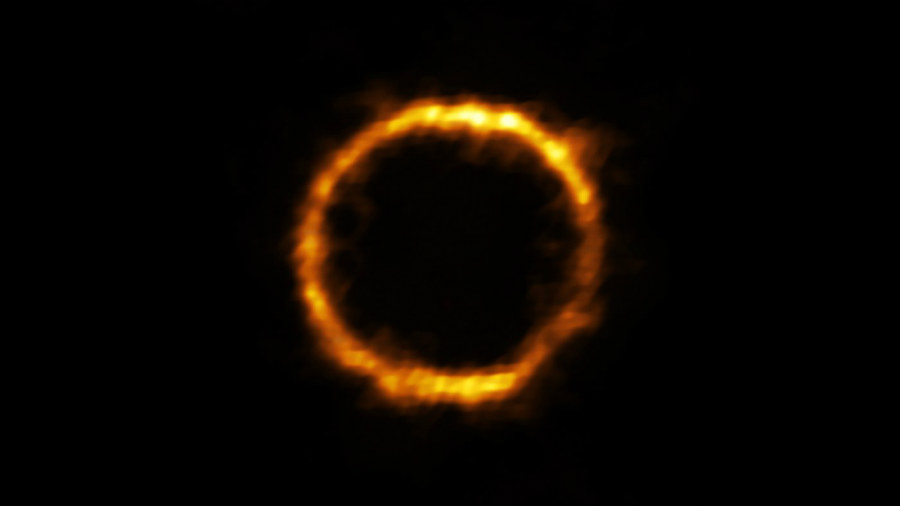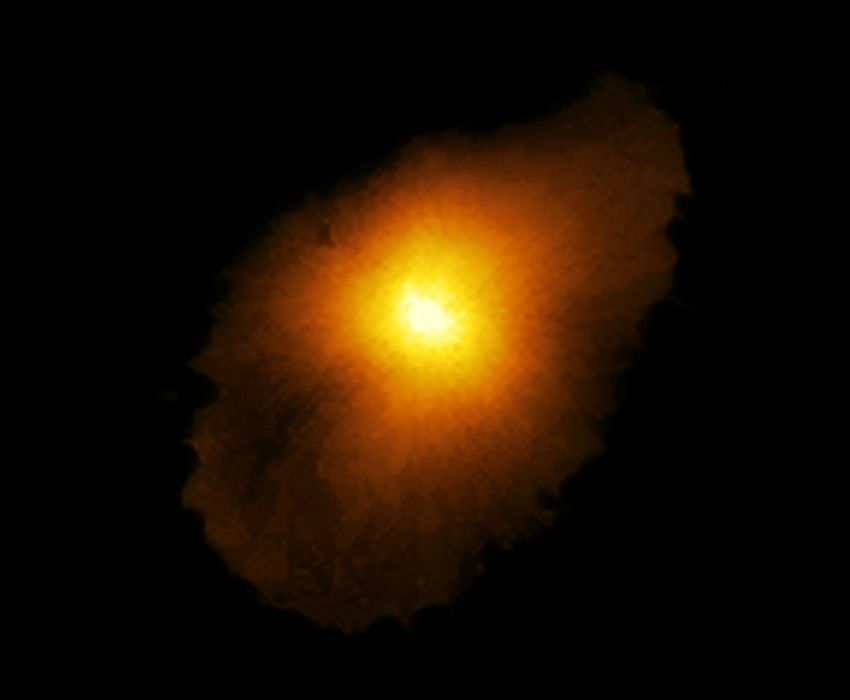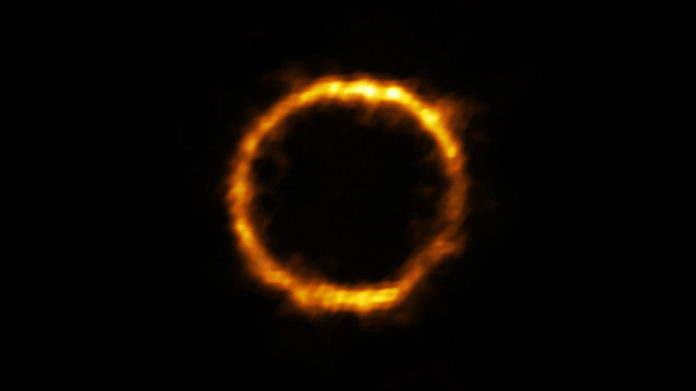
Credit: ALMA (ESO/NAOJ/NRAO), Rizzo et al.
A very interesting galaxy from 12.4 billion light-years away has been spotted by Astrophysicists. Which means the light travelled 12.4 billion years to reach earth and it should have been from when the universe is much young, approximately 1.4 billion years old. This discovery is deemed to be a breakthrough in galaxy formation.
The galaxy is called SPT0418-47 and it bears similarities to our Milky way galaxy. And this will be the farthest milky way-like galaxy ever spotted. According to the study published in the journal Nature reveals that this galaxy seems to be calm and settled contradicting the theory that early universe galaxies are much more unsettled and chaotic. And this has raised questions of our knowledge and theories of cosmic evolution.
How was it spotted?
Cosmic objects this far are very hard to sport clearly, even with the most precise and advanced telescopes and technologies. They tend to appear no more than a faint dot. To overcome this, Astrophysicists used a theory predicted by Einstein, called, the ‘Einstein ring’. It is a phenomenon that happens when the galaxy is gravitationally lensed by a nearby galaxy.
So the researchers used a nearby galaxy to do the job. That is when they hit the jackpot! The nearby galaxy had distorted and bent the light from SPT0418-47 galaxy, resulting in a magnified and distorted version of it. And the Astrophysicists at the Max Planck Institute for Astrophysics were able to successfully spot a near-perfect ring of fire through the Atacama Large Millimeter/submillimeter Array (ALMA) radio telescope.

Credit: MPA/Rizzo et al.
The Astrophysicists then reconstructed the data given by ALMA and created an actual shape and gas motion of the distant galaxy using an advanced computer modelling programme.
“What we found was quite puzzling; despite forming stars at a high rate, and therefore being the site of highly energetic processes, SPT0418-47 is the most well-ordered galaxy disc ever observed in the early Universe,” says Simona Vegetti, the co-author of the study.
SPT0418-47, the most distant Milky Way-like galaxy
The galaxy is similar to the Milky Way galaxy in two ways. First, it has a galactic bulge in the centre and the second is the massive group of stars around it seem to be rotating around the galactic centre like a disc. But it did not have the characteristic spiral arms which are common to a spiral galaxy like ours. Although it is not the first time to discover a rotating disc-galaxy, scientists say that they have never seen a bulge in a galaxy this young or this early in the universe.
Up to now the theories suggested that in the early universe young galaxies are usually still in the making which should theoretically be more turbulent and without a definite shape like a mature galaxy.
In the study, the researchers argue that even though SPT0418-47 seem to be similar to a spiral galaxy like the Milky Way, With time they may evolve to be a different class called, elliptical galaxies which are also common in the universe today. The study initially has been a follow up of an observation in May this year, which stated that there may be a huge rotating disc at a similar distance.
Studies like these are very important to fundamentally learn the formation of the universe. And recent findings have started to paint a different picture of it. It is very interesting at the same time because when we study galaxies this young, theoretically we go back to the early days of the universe and its evolution.

